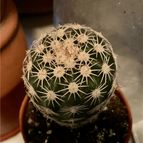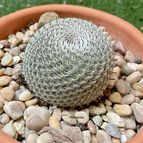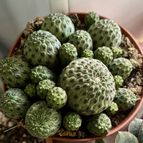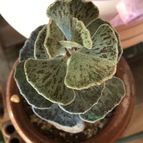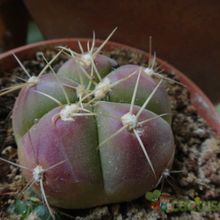
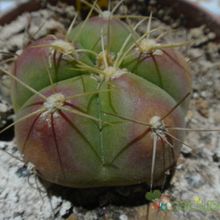
Máximo Pulso
-
0
¿Las fotos son inapropiadas o no respetan el reglamento? Sugiere la eliminación de este cactus






















 Esto es lo que dice CACTUS FAMILY sobre buenekeri: Plants forming clusters. Stems flattened globose to short cylindrical, dark matte green, to 15 cm (5.9 in) high and 10 cm (3.9 in) or more in diameter. Ribs usually 5, broadly rounded, with shallow notches between areoles. Spines 3-5, stiff, slightly curved, pale yellow, becoming dark brown, to
2.5 cm (1 in) long.
Esto es lo que dice CACTUS FAMILY sobre buenekeri: Plants forming clusters. Stems flattened globose to short cylindrical, dark matte green, to 15 cm (5.9 in) high and 10 cm (3.9 in) or more in diameter. Ribs usually 5, broadly rounded, with shallow notches between areoles. Spines 3-5, stiff, slightly curved, pale yellow, becoming dark brown, to
2.5 cm (1 in) long. 





 Y esto es lo que dice PILBEAM: It is a clustering species early in life (G. horstii tends to stay solitary for much longer), with stems at first flat-globose, later short-cylindrical, to 10 cm or more wide, and to about 15 cm tall in age, dark green to mid green, unshining (the most immediately apparent difference from G. horstii, which has a shining epidermis), with usually 5 ribs, broadly rounded with areoles in shallow notches, shallower or nonexistent in youth. Areoles are round, with white to pale yellow wool. The spines are all radial, 3 or occasionally 5, up to 2.5 cm on older plants, shorter when younger, stiff, slightly curved and projecting a little, pale yellow, later dark brown.
Y esto es lo que dice PILBEAM: It is a clustering species early in life (G. horstii tends to stay solitary for much longer), with stems at first flat-globose, later short-cylindrical, to 10 cm or more wide, and to about 15 cm tall in age, dark green to mid green, unshining (the most immediately apparent difference from G. horstii, which has a shining epidermis), with usually 5 ribs, broadly rounded with areoles in shallow notches, shallower or nonexistent in youth. Areoles are round, with white to pale yellow wool. The spines are all radial, 3 or occasionally 5, up to 2.5 cm on older plants, shorter when younger, stiff, slightly curved and projecting a little, pale yellow, later dark brown. 




 Y esto lo que dice PUTNAM: Geoff Swales has concluded from a study of the seed and fruit that G. buenekeri is a quite distinct species from G. horstii. (See The Chileans, No. 30, p. 150). A distinction between G. horstii and G. buenekeri is that the epidermis of the latter is not merely darker in colour than that of G.
horstii but is matt and almost velvety in appearance as against the smooth, glossy skin of G. horstii. It seems to be a perfectly easy species to cultivate though I do not find it very ready to flower.
Y esto lo que dice PUTNAM: Geoff Swales has concluded from a study of the seed and fruit that G. buenekeri is a quite distinct species from G. horstii. (See The Chileans, No. 30, p. 150). A distinction between G. horstii and G. buenekeri is that the epidermis of the latter is not merely darker in colour than that of G.
horstii but is matt and almost velvety in appearance as against the smooth, glossy skin of G. horstii. It seems to be a perfectly easy species to cultivate though I do not find it very ready to flower. 



















